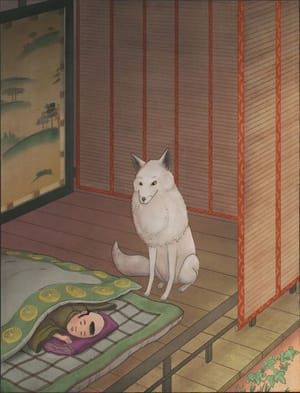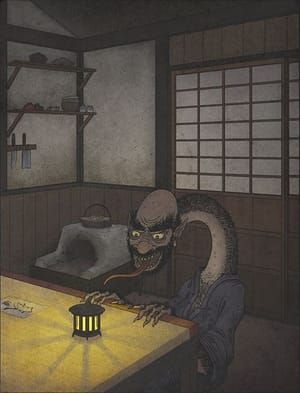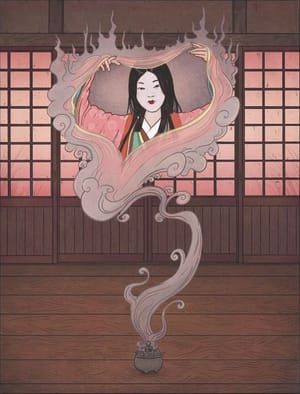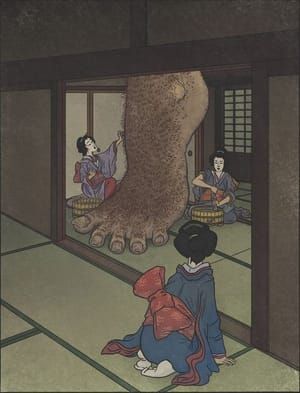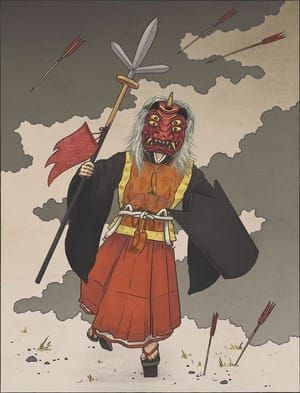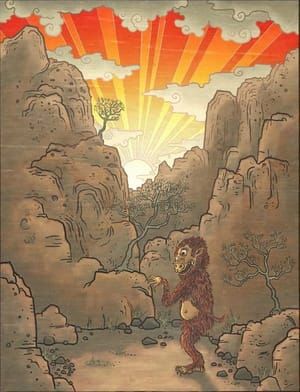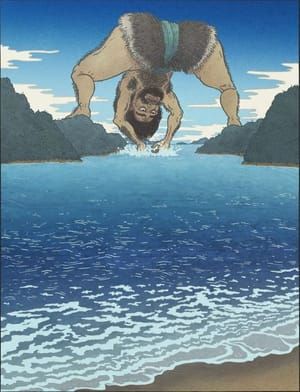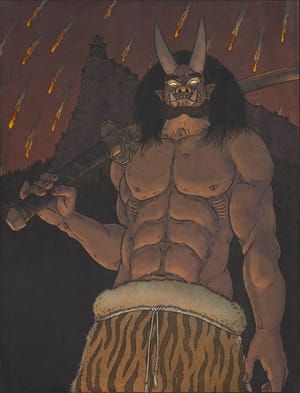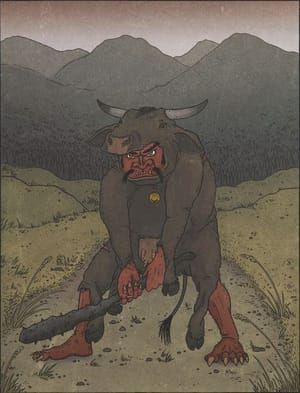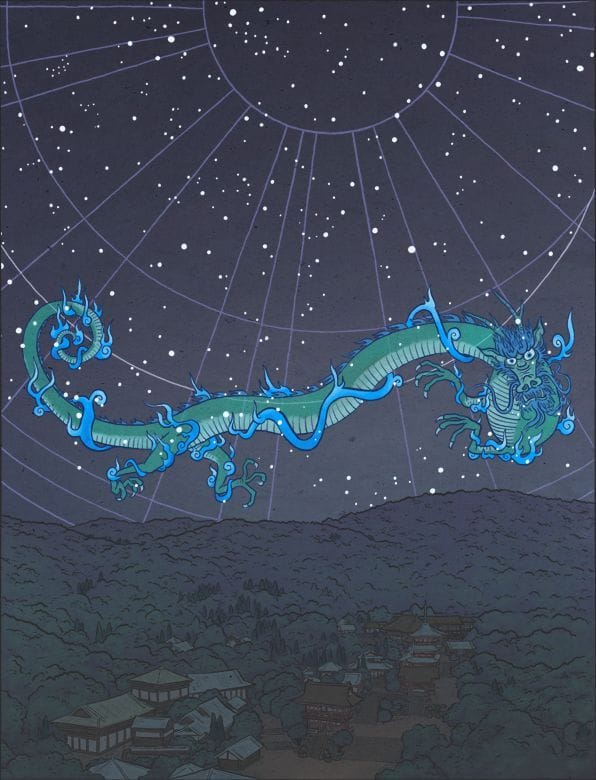

Seiryū, 2016
Matthew Meyer
青竜
Seiryū is a large blue-green dragon with a long tongue. His home is in the eastern sky. He spans seven of the twenty-eight Chinese constellations, taking up one quarter of the entire sky. The constellations which make up the horn and neck of the dragon are located in Virgo. The constellation which makes up the chest of the dragon is located in Libra. The constellations which make up his heart, belly, and tail are located in Scorpius. The final constellation makes up his dung, and is located in Sagittarius.
Seiryū is one of the shijin, or Four Symbols, which are important mythological figures in Taoism. Seiryū is the guardian of the east. He is associated with the Chinese element of wood, the season of spring, the planet Jupiter, and the colors blue and green. He represents the virtue of benevolence, and symbolizes creativity. He controls the rain. He is enshrined in Kyoto at Kiyomizu Temple, in the eastern part of the city.
Seiryū and the other shijin were brought to Japan from China in the 7th century CE. They are strongly associated with Taoism, feng shui, astrology, the five element theory, and other forms of Chinese mysticism. The ancient capitals of Fujiwara-kyō, Heijo-kyō, and Heian-kyō were built in correspondence to these beliefs, with each of the quadrants of the city dedicated to one of the Four Symbols. Excavations of ancient burial mounds in Nara has revealed paintings of Seiryū and the other shijin on the tomb walls.
In later centuries, belief in astrology waned, and worship of the Four Symbols was gradually supplanted by worship of the Four Heavenly Kings of Buddhism. Their use as symbols, however, continued.
Matthew Meyer
artistArthur
coming soon
